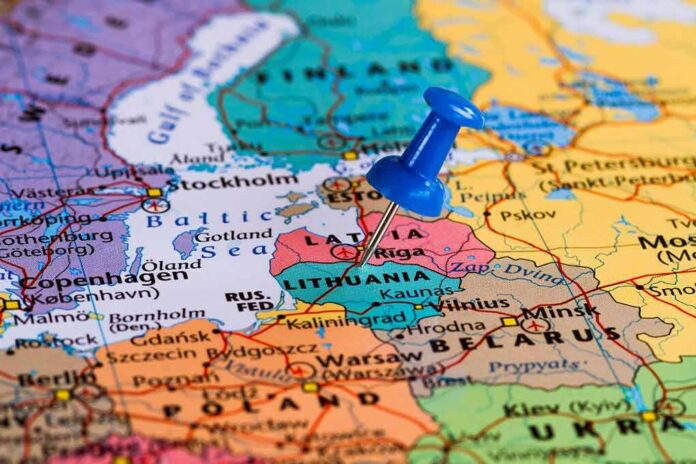Lithuania will spend 1.1 billion euros to line its borders with Russia and Belarus with anti-tank mines, marking one of the most aggressive defensive fortifications by a NATO member in recent times.
Quick Takes
- Lithuania plans to invest 1.1 billion euros over the next decade to fortify its eastern borders with Russia and Belarus
- About 800 million euros will go toward purchasing and installing anti-tank mines
- Lithuania and other Baltic states are withdrawing from the Ottawa Convention that bans anti-personnel mines
- The country plans to increase defense spending to 5-6% of GDP annually from 2026 to 2030
Massive Border Fortification Plan
In response to growing tensions following Russia’s invasion of Ukraine, Lithuania has unveiled an ambitious plan to strengthen its border defenses against potential Russian aggression. The Baltic nation will allocate 1.1 billion euros ($1.2 billion) over the next ten years to fortify its eastern frontier with both Russia and Belarus. This significant investment highlights the seriousness with which Lithuania, positioned on NATO’s eastern flank, views the current security situation in Europe.
The majority of the funds—approximately 800 million euros—will be directed toward purchasing and installing anti-tank mines along the border areas. Additional defensive measures will include deepening irrigation ditches, reforesting border zones, and enhancing electronic warfare capabilities and anti-drone systems. These fortifications aim to “block and slow down the actions of hostile states,” according to official statements from Lithuanian authorities.
Strategic Defense of the Suwalki Gap
A critical focus of Lithuania’s defensive strategy centers on the Suwalki Corridor, also known as the Suwalki Gap—a narrow strip of land connecting Lithuania to Poland. This area represents a strategic vulnerability for NATO’s eastern defenses, as it separates Belarus from Russia’s Kaliningrad exclave. Military analysts have long identified this region as a potential flashpoint in any future conflict between Russia and NATO.
Lithuania’s decision to stockpile weapons and strengthen defenses near this chokepoint demonstrates the country’s understanding of its geopolitical vulnerabilities. The defense ministry has emphasized that these measures are purely defensive in nature and designed to increase the costs of any potential aggression against Lithuanian territory or NATO’s eastern flank.
Abandoning International Mine Treaties
In a controversial move that underscores the severity of the perceived threat, Lithuania—along with Estonia, Latvia, and Poland—announced plans to withdraw from the Ottawa Convention, which prohibits the use of anti-personnel mines. This decision has drawn criticism from human rights organizations concerned about the long-term impact on civilian populations. However, Lithuanian officials maintain that the security situation requires these extraordinary measures.
The Russian response to these developments has been predictably negative. SVR Director Sergey Naryshkin issued a warning that Poland and the Baltic states would be among the first affected in any potential NATO-Russia conflict. This escalating rhetoric follows Western intelligence assessments that have warned of the possibility of a large-scale war in Europe within the next five years due to Russia’s increasingly aggressive posture.
Unprecedented Defense Spending Increases
Lithuania’s commitment to national defense extends beyond border fortifications. The country plans to substantially increase its defense spending to between 5% and 6% of GDP annually from 2026 to 2030. This represents one of the highest defense budgets as a percentage of GDP among NATO members, far exceeding the alliance’s 2% target. The decision reflects Lithuania’s assessment that conventional deterrence requires significant financial commitment.
Since Russia’s full-scale invasion of Ukraine in 2022, all three Baltic states—Lithuania, Latvia, and Estonia—have significantly increased their defense preparations based on the assessment that they could be future targets of Russian aggression. These countries share historical experiences with Soviet occupation and consider Russia’s actions in Ukraine as indicative of broader regional ambitions that threaten their sovereignty and territorial integrity.
Sources:
- https://www.kyivpost.com/post/52114
- https://kyivindependent.com/lithuania-to-mine-border-with-russia-belarus-in-1-2-billion-defense-plan/
- https://www.spacewar.com/reports/Lithuania_to_spend_12_bn_to_fortify_Russia_Belarus_border_999.html











